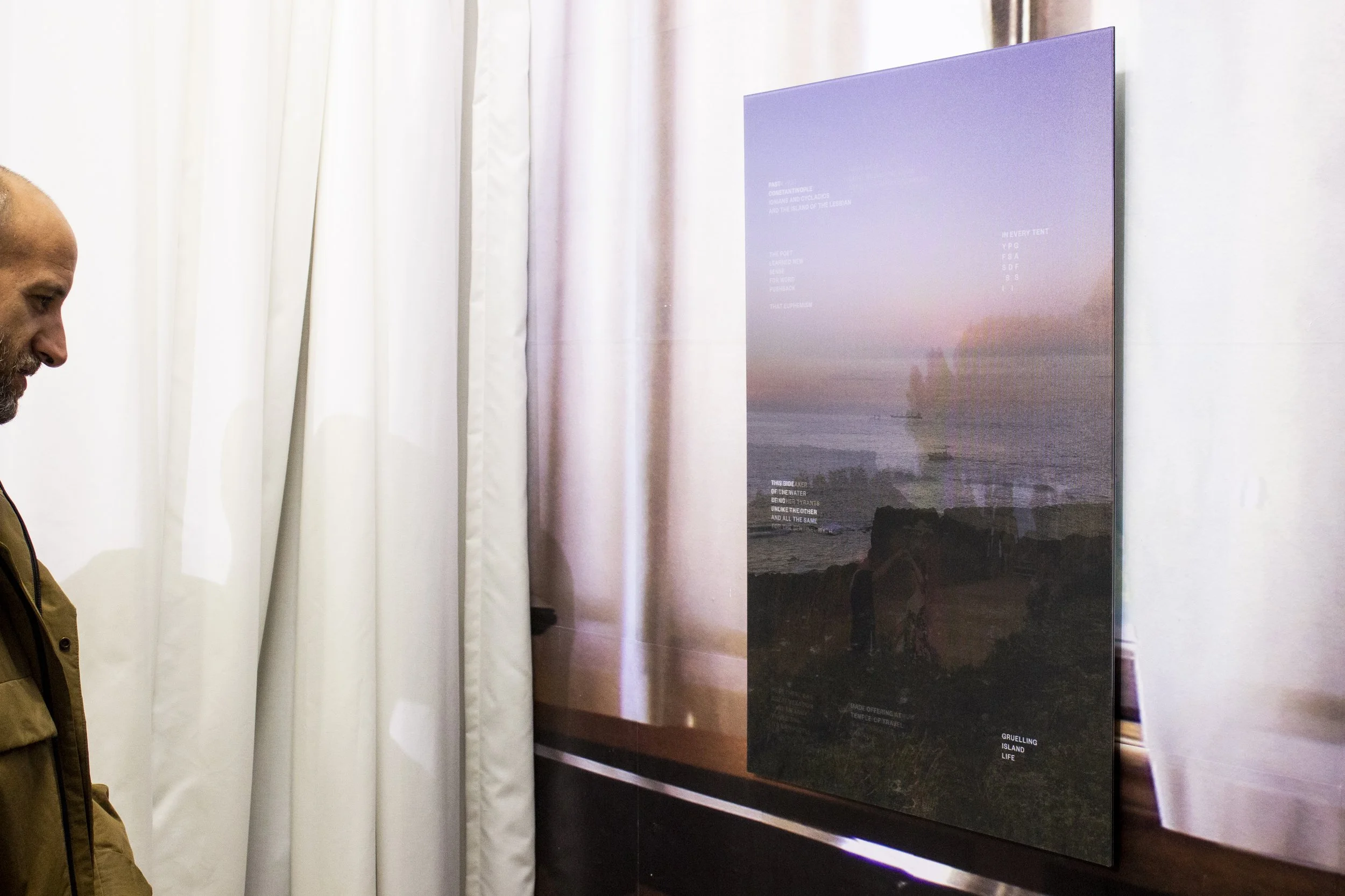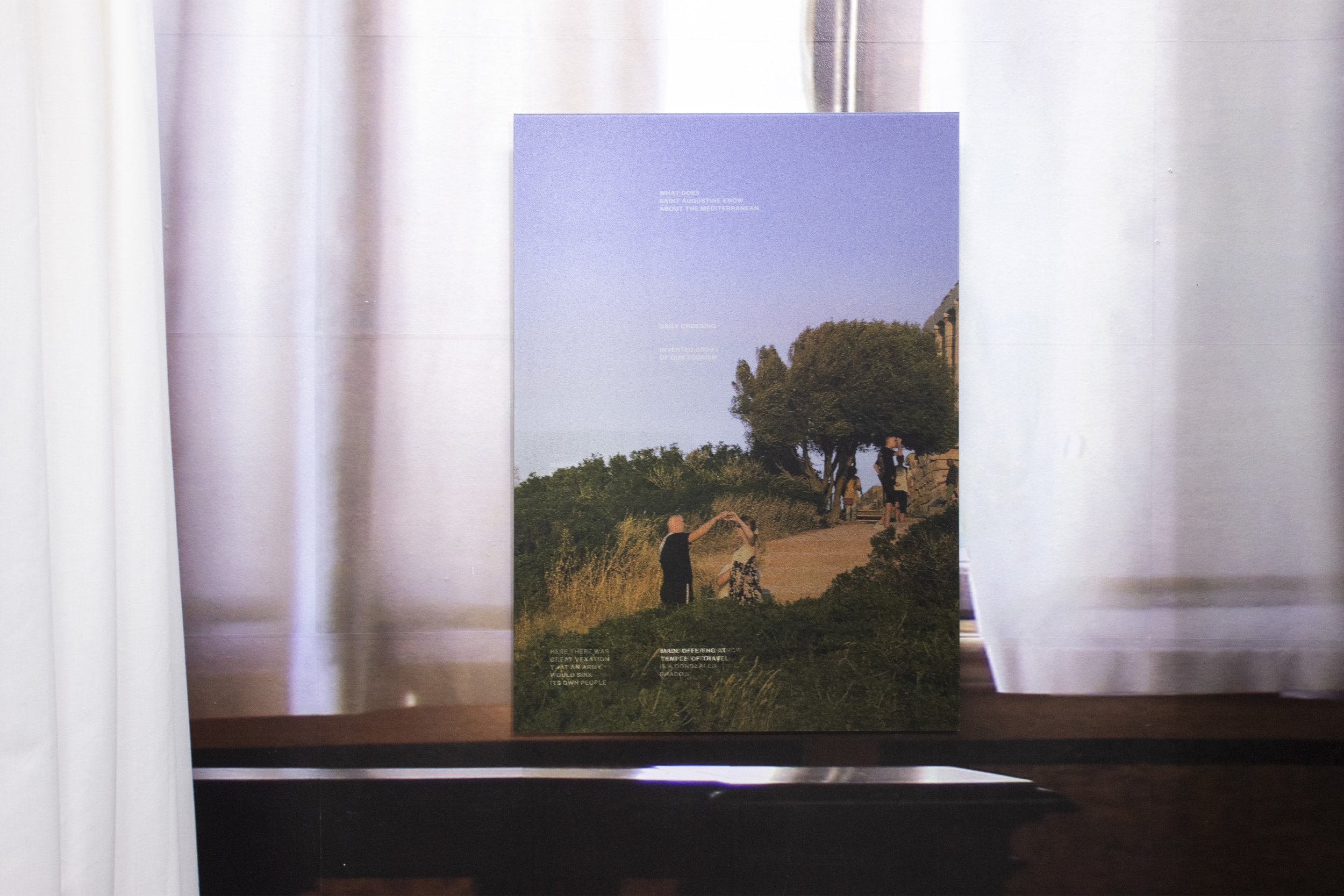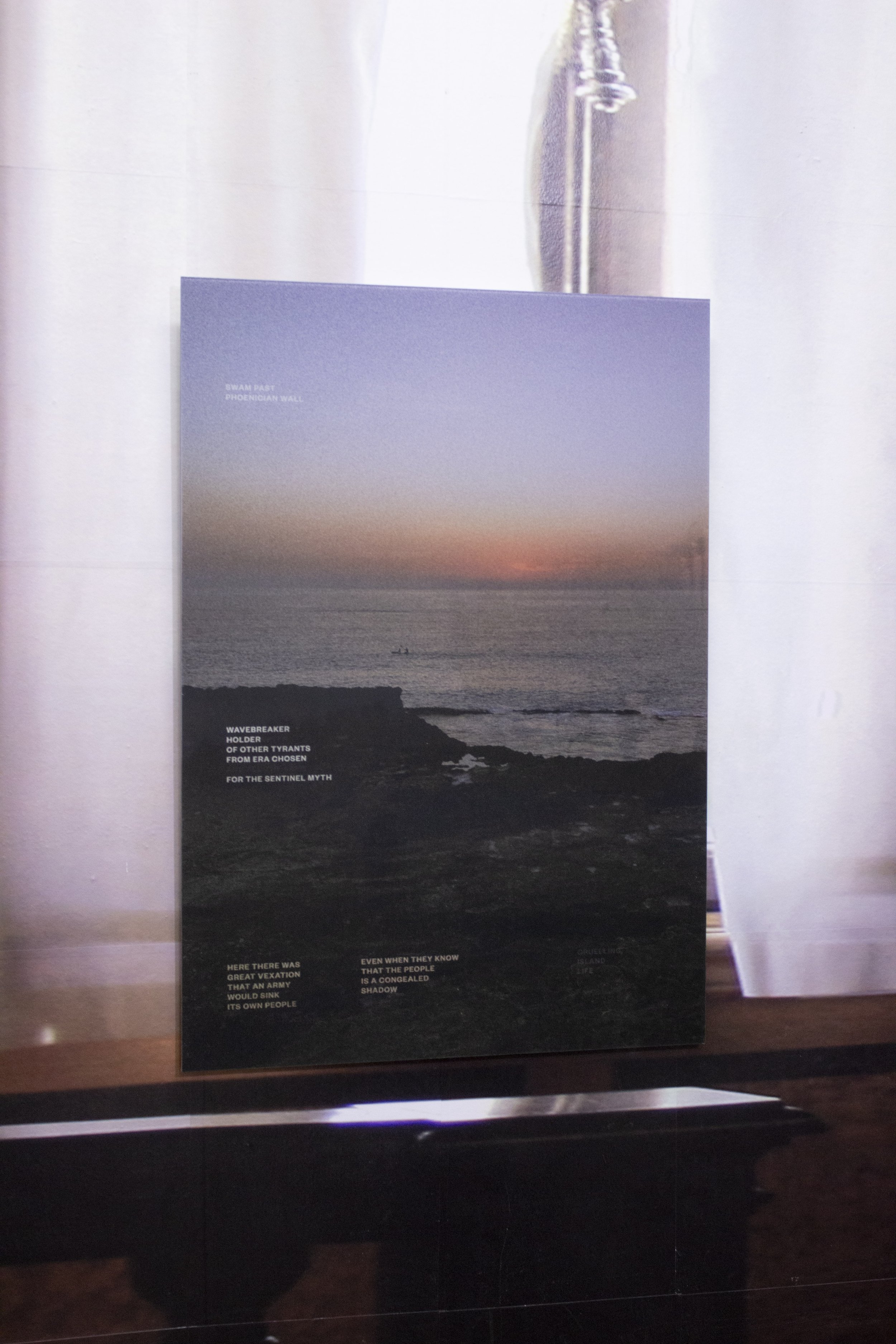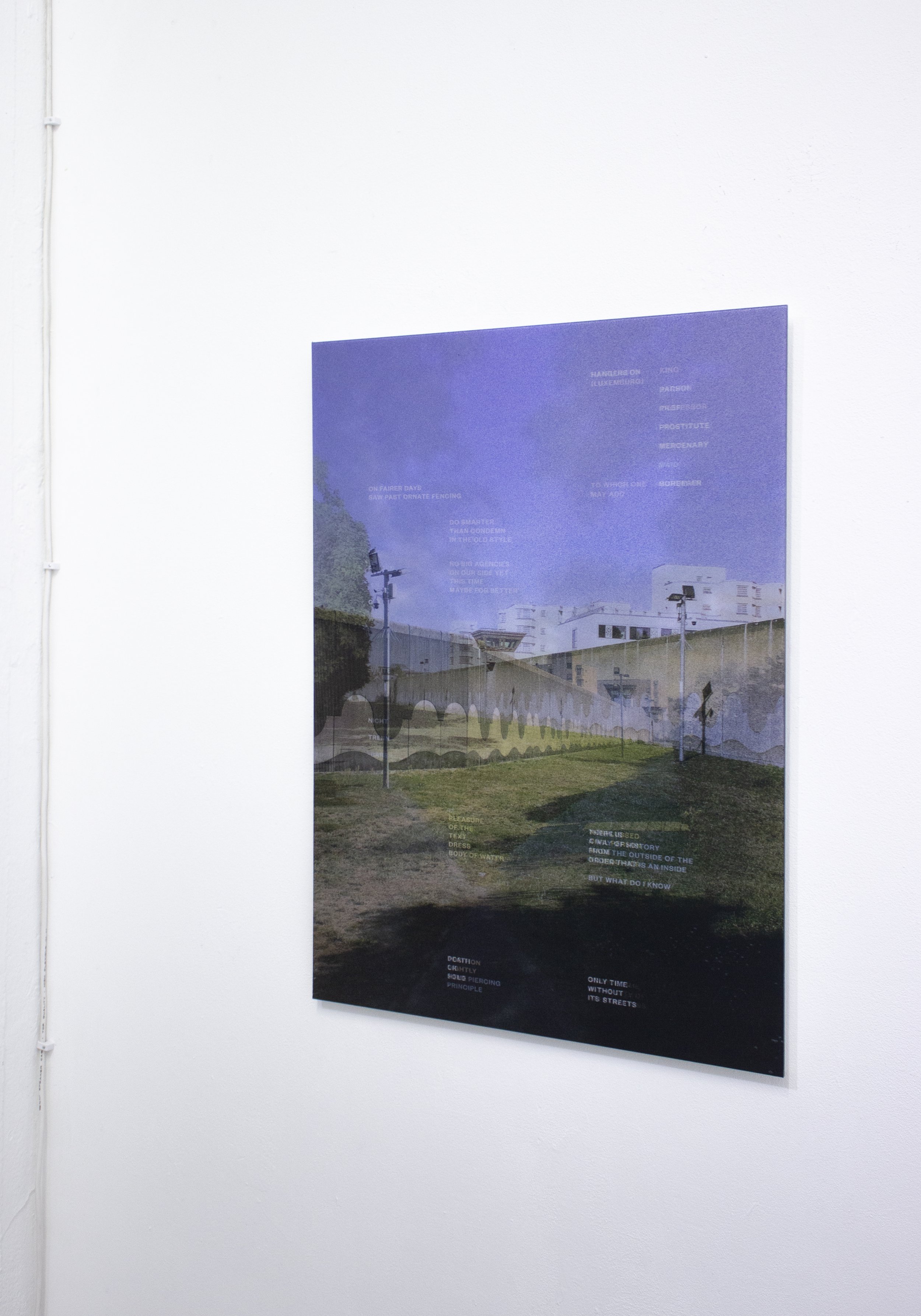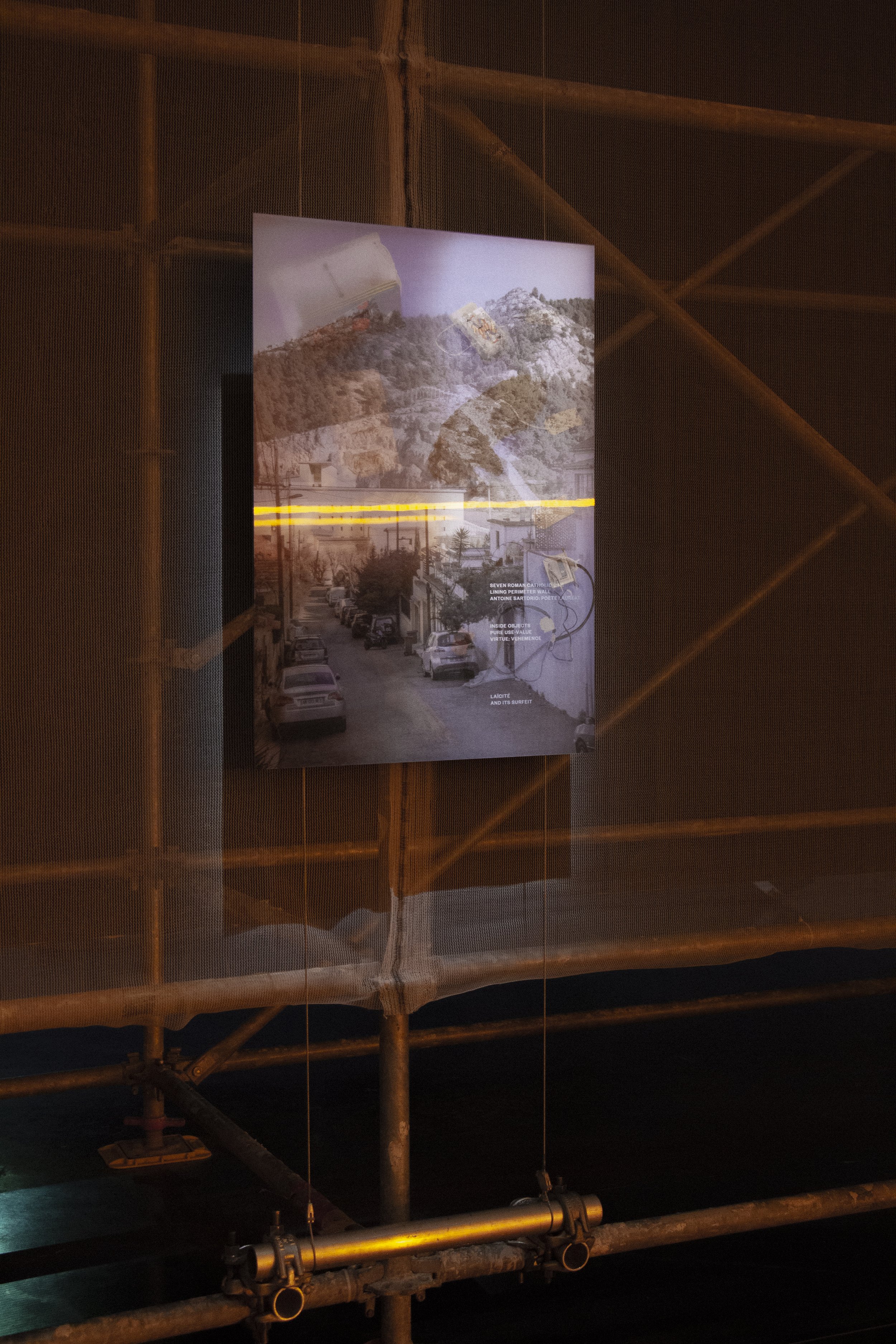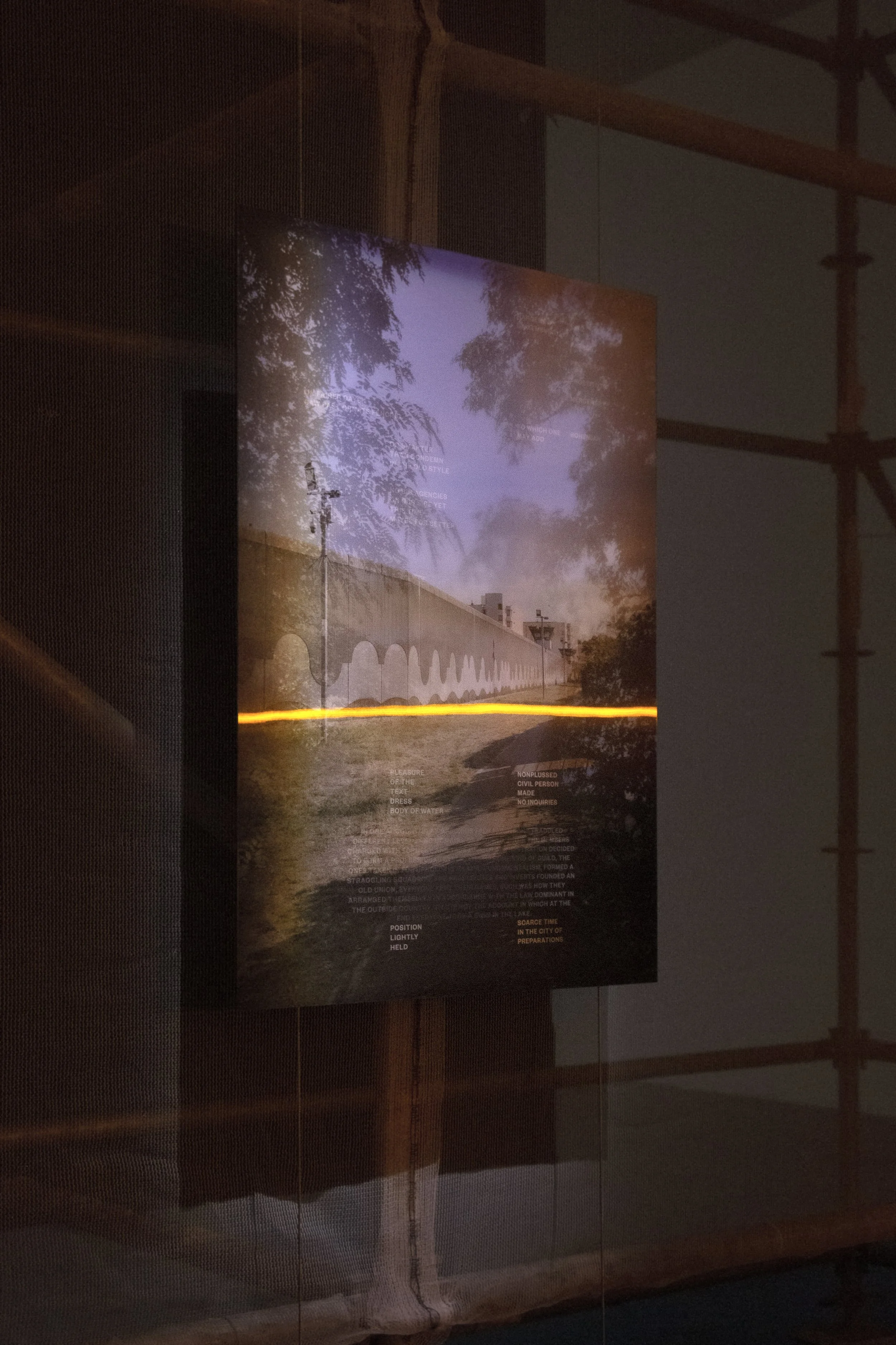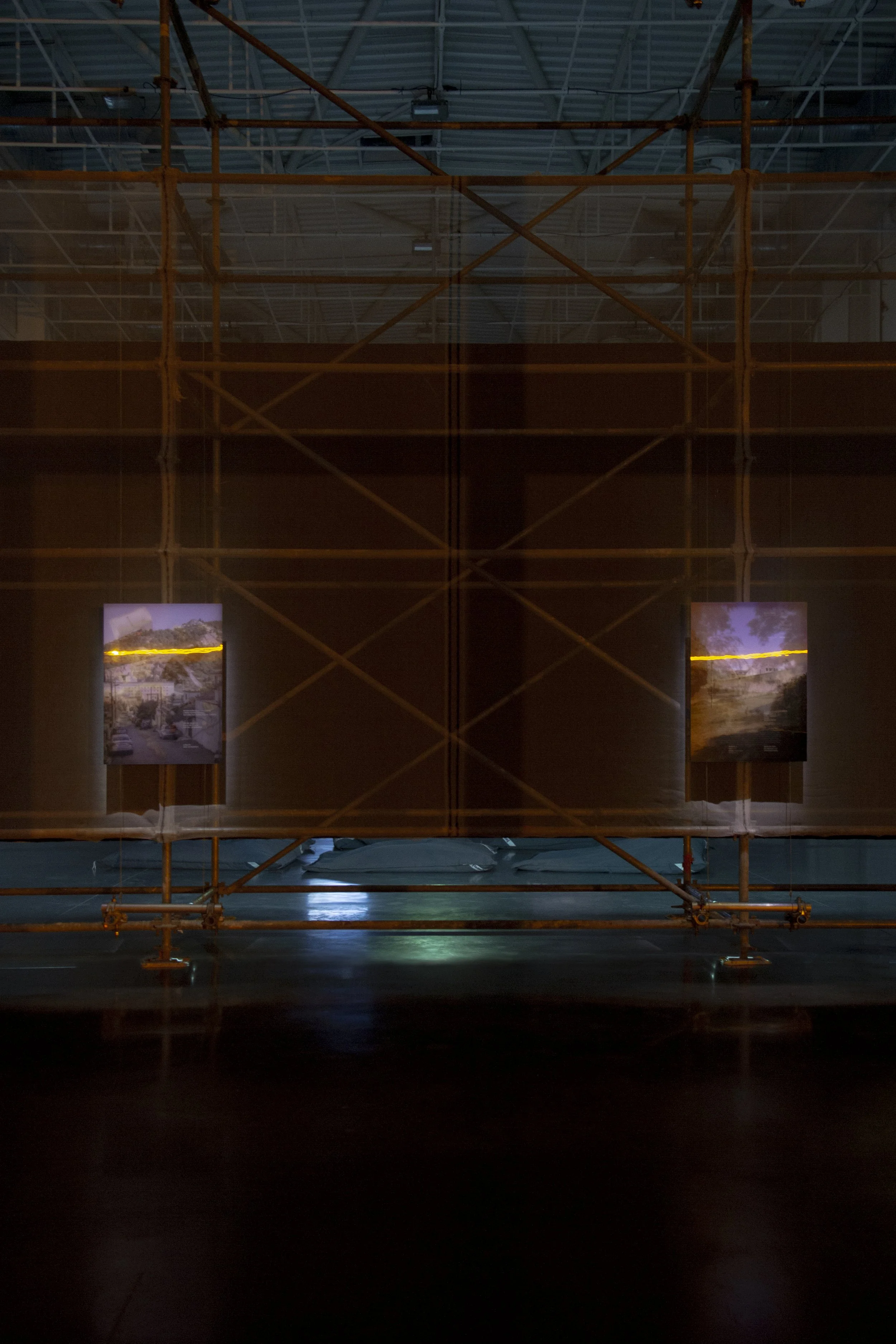Suppose that Rome is not a human habitation is an ongoing series of lenticular prints combining photography and text, centered around different geographic sites whose occupants are considered peripheral to the city, nation-state, and wage relation. The sites and objects portrayed are also ones of leisure or culture. Through text and poetic verse, each composite image attempts to move beyond the sensuous dimensions of the sites, which are accessed through naturalist photography. At play in each composition is an incommensurable rift between the lifeworlds of different social actors attached to the geographic sites.
The title of the series is lifted from Freud’s Civilization and its Discontents. In the passage, as Freud insists that memory traces remain in the unconscious and are not destroyed, he attempts to liken the unconscious to an unreconciled version of Rome which has all its past superimposed onto the present, where the observer “would perhaps only have to change the direction of his glance or his position in order to call up the one view or the other.” He indulges for an extended moment in describing the palaces, piazzas, Temple of Jupiter, Septizodium, and other imperial splendors, before abruptly retiring the metaphor. One is prompted to wonder about the analogy whereby an individual psyche proves comparable to the resplendent center of Roman slave society.
Formally, each image composite sets up a diorama of elements extracted from the sites in question. The locations of the first two lenticulars include Flughafensee, a lake adjacent to a prison in Berlin; a Phoenician border wall on the northern Lebanese coast; and a Poseidon temple in southern Greece. The natural and architectural features of the sites, their symbolic value and attendant social actors—as well as the spirits they summon—are brought together askew, in a decidedly non-naturalistic rendering. The images contain source material for a series of poems that I have not yet written or may never write.
The third lenticular, produced on the occasion of a solo exhibition in Marseille, revolves around a set of objects expropriated from prisoners at the Baumettes prison and ultimately placed in the collection of the Museum of Civilizations of Europe and the Mediterranean (Mucem).
